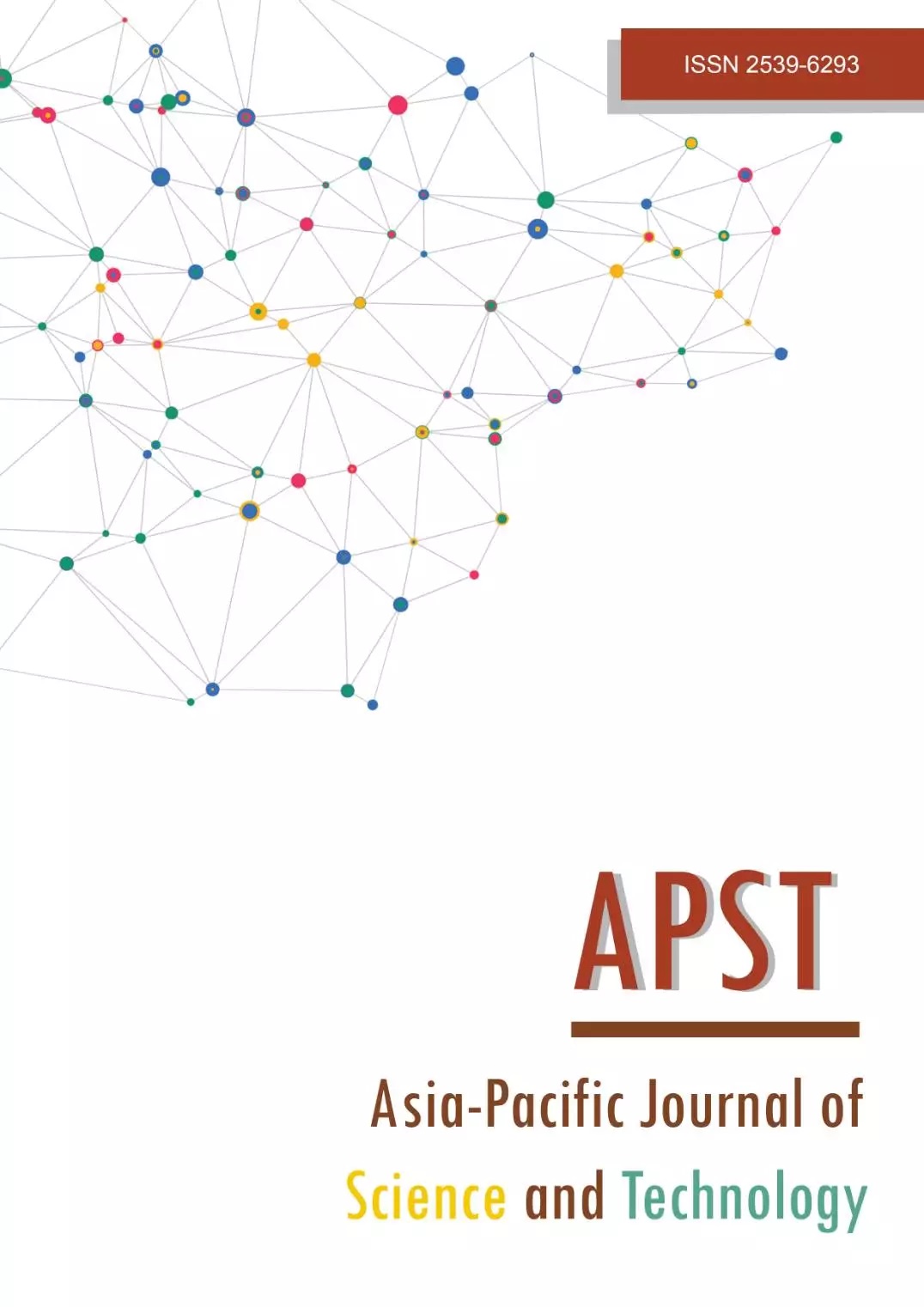Thai massage using squeezed technique could relieve pain and stiff neck in neck strain patients
Main Article Content
Abstract
To verify the immediate and short-term effects of a modified traditional Thai massage (TTM) that uses a squeeze technique on the cervical range of motion (CROM), muscle pain intensity, pressure pain threshold (PPT), and muscle tension in patients with neck strain, a sample of 60 patients who had neck strain were randomly allocated to either a traditional Thai massage group that uses this squeeze technique once a day or a control group taking ibuprofen and rest for the same period. Outcomes such as CROM, pain intensity, PPT, and tissue hardness were assessed at baseline and immediately after the first treatment session. Daily follow-up over telephone on pain intensity was also conducted for three days. The TTM group showed significant improvements in their conditions after the treatment in comparison with the corresponding baselines of the other group (p< 0.01). The inter-group differences were 7.5 (95% CI 4.6-10.4) in flexion, 7.8 (95% CI 4.0-11.7) in extension, 8.1 (95% CI 3.45-12.7) in right rotation, 10.2 (95% CI 5.6-14.6) in left rotation, 7.0 (95% CI 4.6-9.4) in right lateral flexion, 5.8 (95% CI 3.1 to 8.6) in left lateral flexion, 0.7 (95% CI 0.3-1.1) in PPT, -7.2 (95% CI -11.1-3.3) in tissue hardness, -2.2 (95% CI -3.0-1.4) in the visual analog scale (VAS). The three-day follow-ups revealed that the pain intensity was assessed for each group and in inter-group comparison (p< 0.01). These results suggest that the TTM using the squeeze technique could increase the CROM and the PPT and decrease the pain intensity and tissue hardness in patients with neck strain.
Article Details

This work is licensed under a Creative Commons Attribution-NonCommercial-NoDerivatives 4.0 International License.
References
Fejer R, Kyvik KO, Hartvigsen J. The prevalence of neck pain in the world population: a systematic critical review of the literature. Eur Spine J. 2006;15:834-848.
Misailidou V, Malliou P, Beneka A, Karagiannidis A, Godolias G. Assessment of patients with neck pain: a review of definitions, selection criteria, and measurement tools. J Chiropr Med. 2010;9:49-59.
Ravichandran P, Ponni HK, Aseer AL. Effectiveness of ischemic compression on trapezius myofascial trigger points in neck pain. Int J Physiother. 2016;3(2):186-192.
White K, Thomas H, Joseph T. Cervical sprain/strain definition. Dis Mon. 2009;55(2):724-728.
Walter R, Julie K, Thomas D. Essentials of physical medicine and rehabilitation: musculoskeletal disorders, pain, and rehabilitation. 3rd ed. Philadelphia: Elsevier Saunders; 2002.
Cheng Y, Huang G. Efficacy of massage therapy on pain and dysfunction in patients with neck pain: a systematic review and meta-analysis. Evid Based Complement Alternat Med. 2014:13-32.
Qandil A. Prodrugs of non-steroidal anti-Inflammatory drugs (NSAIDs), More than meets the eye: a critical review. Int J Mol Sci. 2012;13(12):17244-17274.
Yoopat P, Maes C, Poriau S, Vanwonterghem K. Thai traditional massage: efficiency-assessment of three traditional massage methods on office workers: an explorative study. J Bodyw Mov Ther. 2015;19(2):246-252.
Cowen V, Burkett L, Bredimus J, Daniel E, Lamey S, Neuhauser T, et al. A comparative study of Thai massage and Swedish massage relative to physiological and psychological measures. J Bodyw Mov Ther. 2006;10(4):266-275.
Tapanya S. Traditional Thai massage. 1st ed. Bangkok: Duang Kamol; 1993.
Gemmell H, Miller P, Nordstrom H. Immediate effect of ischaemic compression and trigger point pressure release on neck pain and upper trapezius trigger points: a randomized controlled trial. C Chiropr. 2008;11(1):30-36.
Eungpinichpong W, Kungnaka T. Effects of femoral artery temporarily occlusion on skin blood flow of foot. J Med Tech Phy Ther. 2002;14(2):151-159.
Buttagat V, Eungpinichpong W, Chatchawan U, Kharmwan S. The immediate effects of traditional Thai massage on heart rate variability and stress-relate parameters in patients with back pain associated with myofascial trigger points. J Bodyw Mov Ther. 2011;15(1):15-23.
Buttagat V, Eungpinichpong W, Chatchawan U, Arayawichanon P. Therapeutic effects of traditional Thai massage on pain, muscle tension and anxiety in patients with scapulocostal syndrome: a randomized single-blinded pilot study. J Bodyw Mov Ther. 2012;16(1):57-63.
Buttagat V, Eungpinichpong W, Kaberd D P. Acute effects of traditional Thai massage on electroencephalogram in patients with scapulocostal syndrome, Chatchawan U, Arayawichanon. Complement Ther Med. 2012;20(4):167-174.
Christopher A, James R, James W. A meta-analysis of massage therapy research. Psychol Bull. 2004;130(1):3-18.
Eungpinichpong W. Therapeutic Thai massage. 1st ed. Bangkok; Chonromdek Publishing House; 2008.
Rohrig B, Baptist JDP, Wachtlin D, Kwiecien R, Blettner M. Sample size calculation in clinical trials. Dtsch Arztebl Int. 2010;107(31-32):552-600.
Panngooluem K, Eungpinichpong W. Reliability and validity of a “WE-CAP” device for measurement of cervical range of motion. J Med Tech Phy Ther. 2018;30(2):237-243.
Audette I, Dumas JP, Julie N, Sophie J, Sophie J. Validity and between-day reliability of the cervical range of motion (CROM) device. J Orthop Sports Phys Ther. 2010;40(5):318-323
Bijur P, wendy S, John G. Reliability of the visual analog scale for measurement of acute pain. Acad Emerg Med. 2001;8:1153-1157.
Damapong P, Kanchanakhan N, Eungpinichpong W, Putthapitak P, Damapong P. A randomized controlled trial on the effectiveness of court-type traditional Thai massage versus amitriptyline in patients with chronic tension-type headache. Evid Based Complement Alternat Med. 2015;(5):930175.
Ylinen J. Pressure algometry. Aust J Physiother. 2007;53(3):207.
Starmer DJ, Duquette SA, Stainsby BE, Giuliano AM. The examination of soft tissue compliance in the thoracic region for the development of a spinal manipulation training mannequin. J Can Chiropr Assoc. 2015;59(2):150-156.
Delaney JPA, Leong KS, Watkins A, Brodie D. The short-term effects of myofascial trigger point massage therapy on cardiac autonomic tone in healthy subjects. J Adv Nurs. 2002;37(4):364-371.
Weerapong P, Patria A, Gregory S. The Mechanisms of Massage and effects on performance, muscle recovery and injury prevention. Sports Med. 2005;35(3):235-256.
Field, T, Diego M, Hernandez R. Massage therapy research. Dev Rev. 2007;27(1):75-89.


